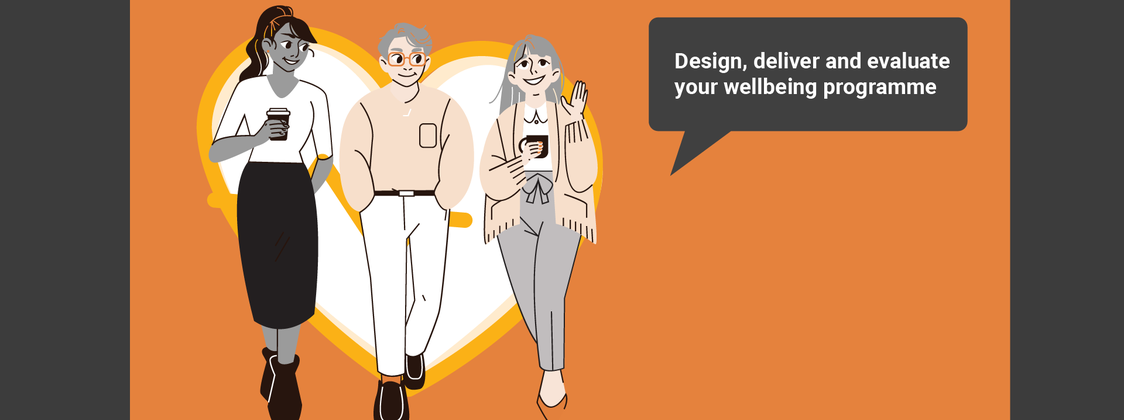Three Tips to Creating an Engaging Survey - that you might not have heard before
A great survey does more than collect valuable insights. But how do we keep people engaged?
An effective wellbeing programme involves a lot more than encouraging people to move and eat their veggies.

Written by

Superpower: Finding glitches in the Matrix
Fixation: The red pill
Dana is Scarlatti’s wellbeing programme design specialist with over 25 years’ experience in the wellbeing space. Her work also spans strategy facilitation, monitoring and evaluation, extension programme design, and impact modelling.
Her farming background, and wellbeing and corporate experience, brings a comprehensive perspective and depth of knowledge to our projects. She initiated the GoodYarn licensing programme, which has seen over 20,000 people educated in mental health literacy and has served over 500 clients in the wellbeing space.
Dana loves questioning the status quo and discovering new ways to approach old dilemmas. These qualities ensure clients do not get tick box programmes but find the right initiatives and solutions for their organisation.
Dana holds a Bachelor of Psychology, with post-graduate studies in physiology. She is a certified personal trainer, fitness instructor and wellness coach. Dana also speaks at conferences and forums on multiple topics.
For the past two decades, organisational wellbeing programmes have mostly consisted of step challenges and green smoothies. But how many people are really excited about strapping on a Fitbit and powering up the juicer? Well, we can tell you: less than 20%.
An effective wellbeing programme involves a lot more than encouraging people to move and eat their veggies. Instead, modern wellbeing programmes are an integral part of a business strategy.
Strategic wellbeing programmes are where:
The New Zealand Health and Safety Act states that, “workers and other persons should be given the highest level of protection against harm to their health, safety, and welfare from work risks as is reasonably practicable.” Regulation of psychosocial hazards has already started in other countries. It won’t be long until New Zealand businesses will be required to have robust wellbeing measures in place.
A wellbeing programme needs to be as strategic and systematic as any other part of the business, and that means looking after the business as well as the team.
Therefore, no tick-the-box approach will ensure your team is healthy and your business protected and thriving. The key is to design a fit-for-purpose programme that meets your business’s needs and is constantly evaluated.
So, goodbye to lunch-time Yoga classes and off-site mental health training, and hello to strategy sessions, identifying psychosocial risks, and innovative education and training that reaches every corner of the business.
The four key main ingredients to a successful wellbeing programme are:
If you’re ready to transform the way your organisation does wellbeing, Scarlatti offers a full menu, from designing your programme (the starters), to delivering it (the mains), through to evaluating it (the dessert).
We’ll run an interactive workshop for your key team members, looking at what you’re trying to achieve and what you’re already doing. You’ll get a logic model, psychosocial hazard risk table, and a programme recommendations report.
Decide what main you’d like based on the starter. We’ll give you a list of wellbeing options to choose from (and green smoothies are on the list if you really want them), from wellbeing training modules for your managers to health assessments for staff, to mental health literacy workshops. You can even order a few side dishes – like a step challenge if you want. The important thing is that whatever you order fits in your strategy and are the right things for your unique team and unique risks.
Monitoring and evaluating your wellbeing programme is the icing on the cake. By doing a baseline survey that measures your team’s wellbeing, engagement and interests, you can measure progress and effectiveness to ensure your programme is hitting the mark, as well as gather feedback on initiatives to see which are the most popular and useful.
By the end, you’ll have a deep understanding of what mental health is; you’ll have practical, easy-to-use tips and tricks on how to keep your organisation resilient; and be fuelled with tried and tested resources.
A wellbeing programme is not only the right thing to do by your people, but with regulations likely on their way, your business needs to get ahead of the game.
If you’re thinking this sounds expensive, don’t worry; we have menus for all budgets, and one of our specialties is helping you pick the most effective option for your budget.
Wherever you are on your path for workplace wellbeing - whether you’re just starting out or have been running a wellbeing programme for a while - Scarlatti can help.
Organisational wellbeing